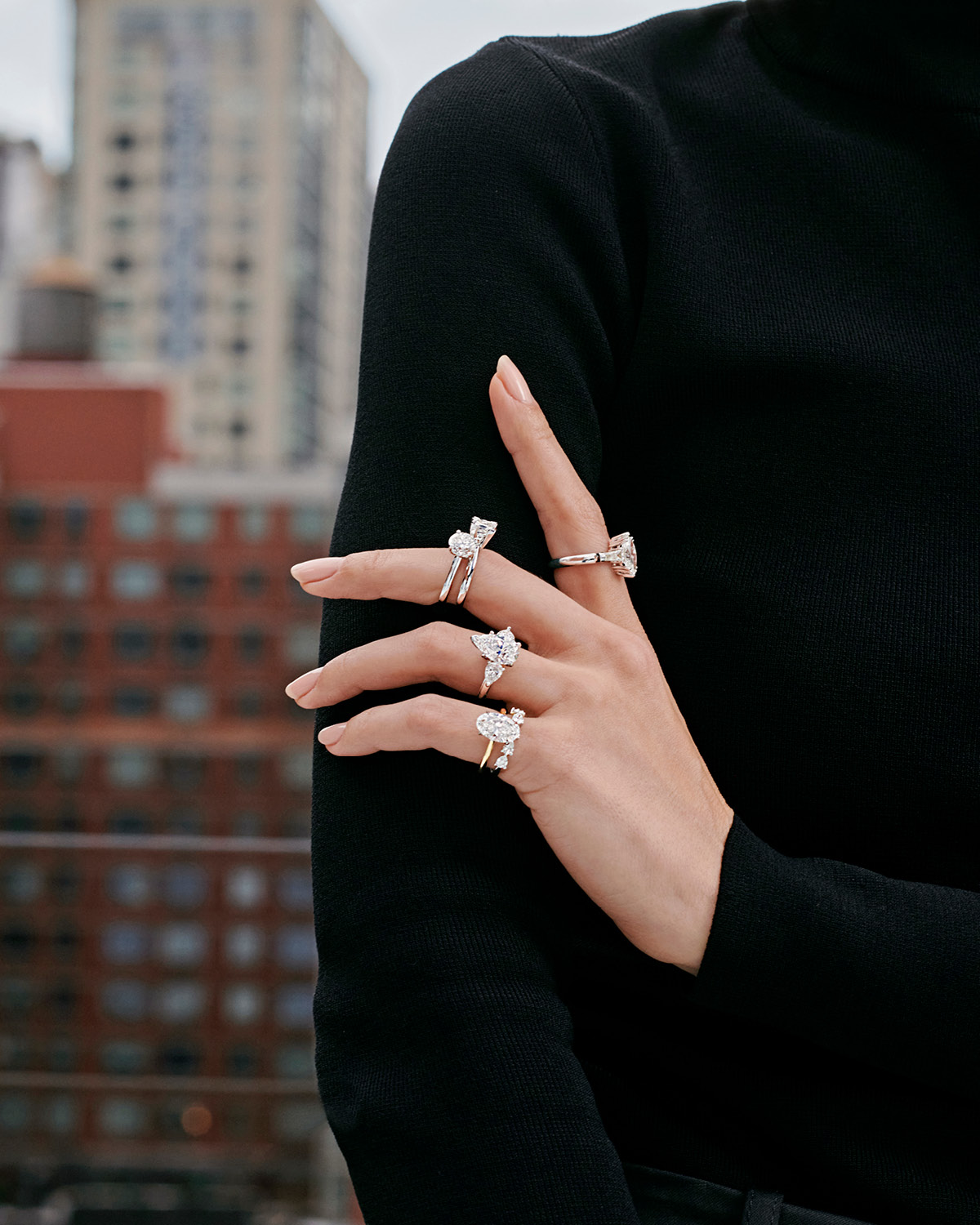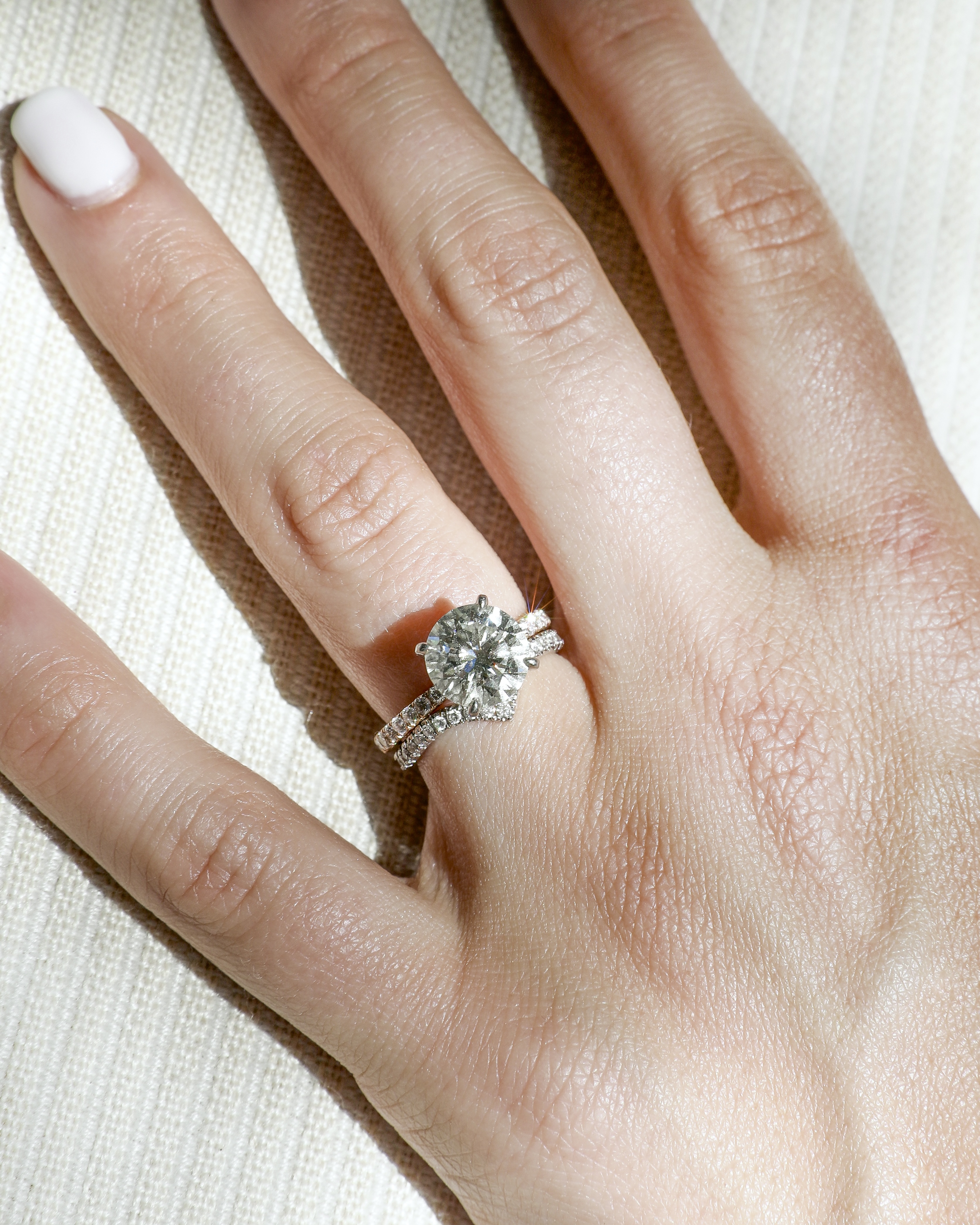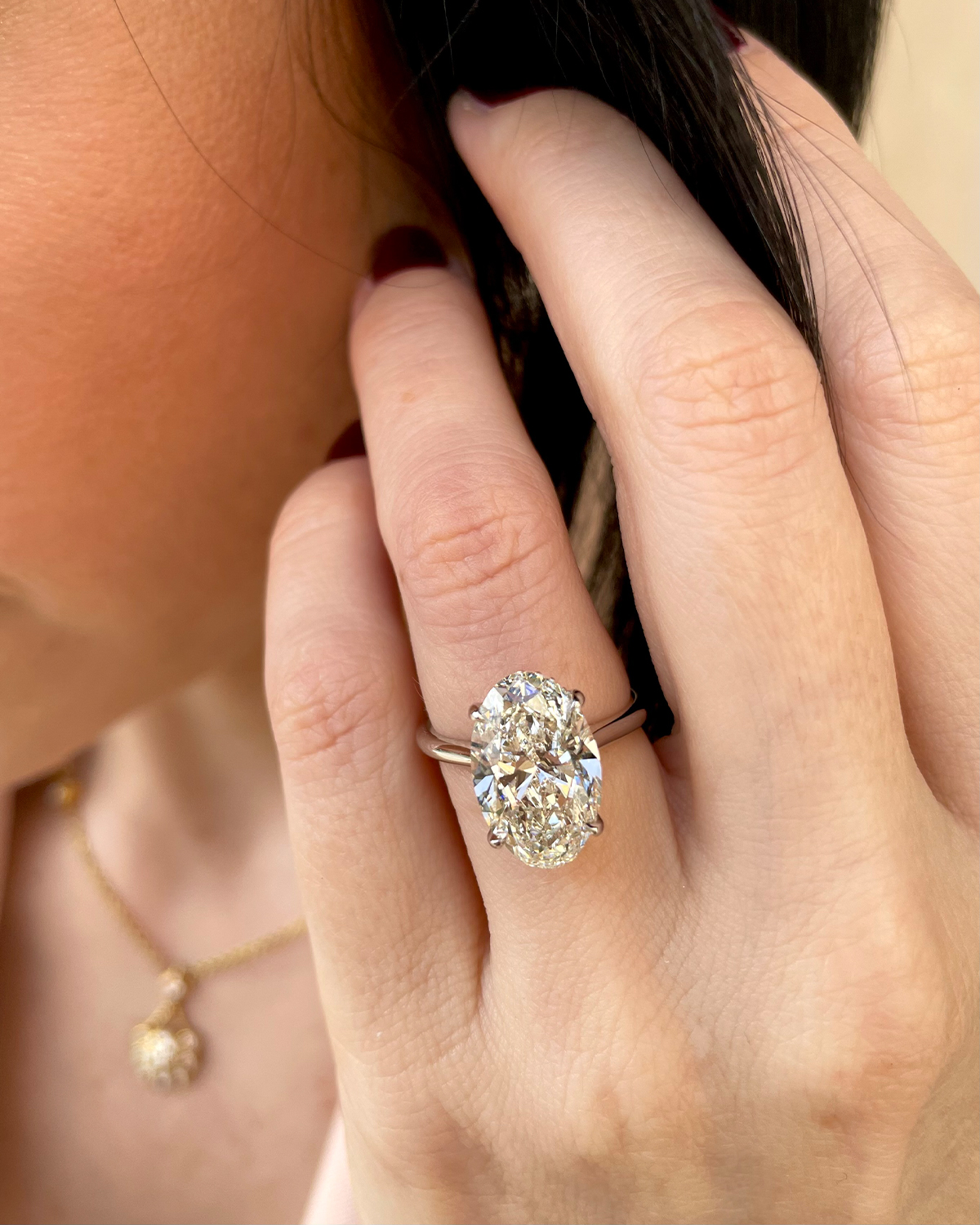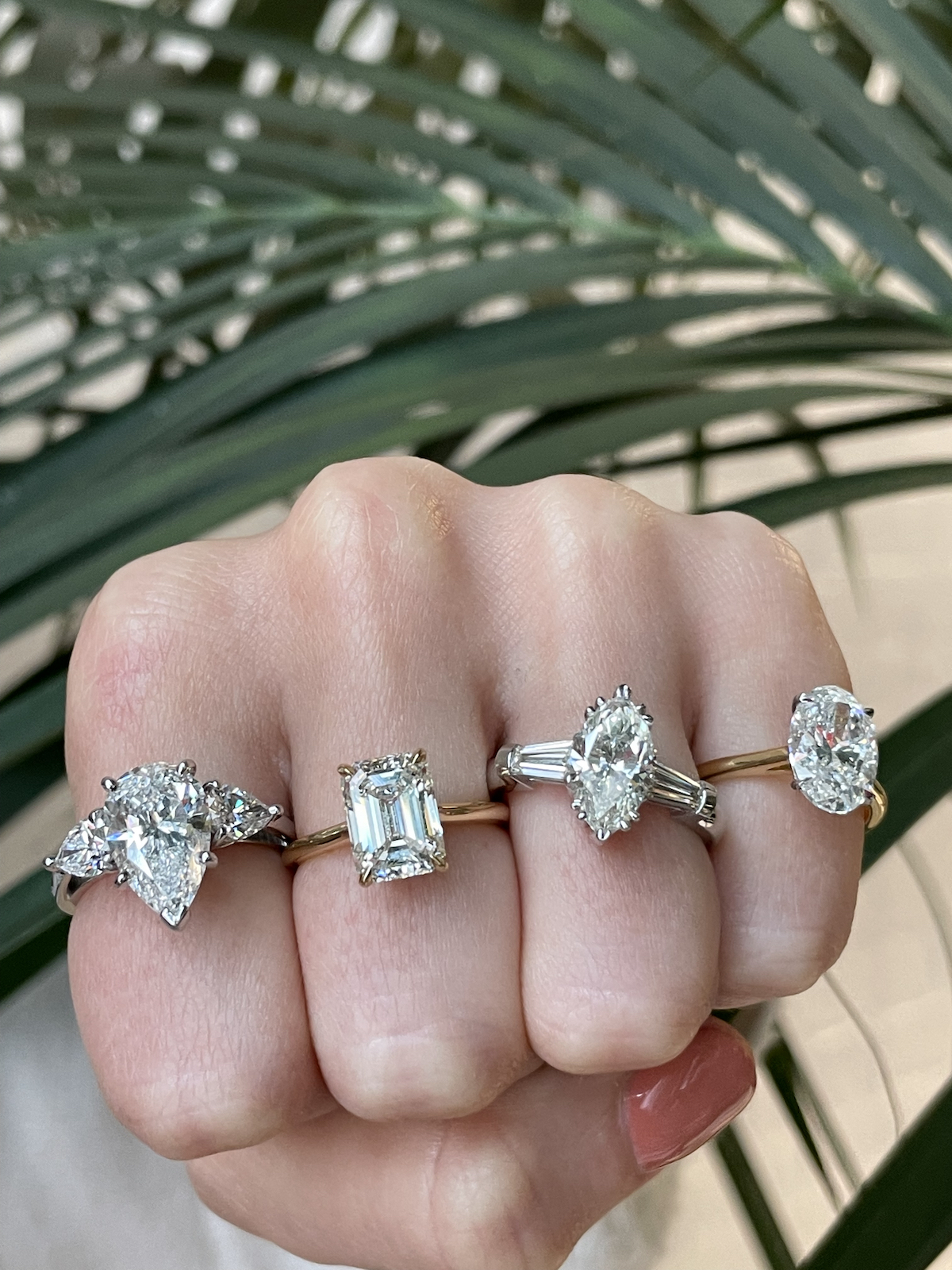
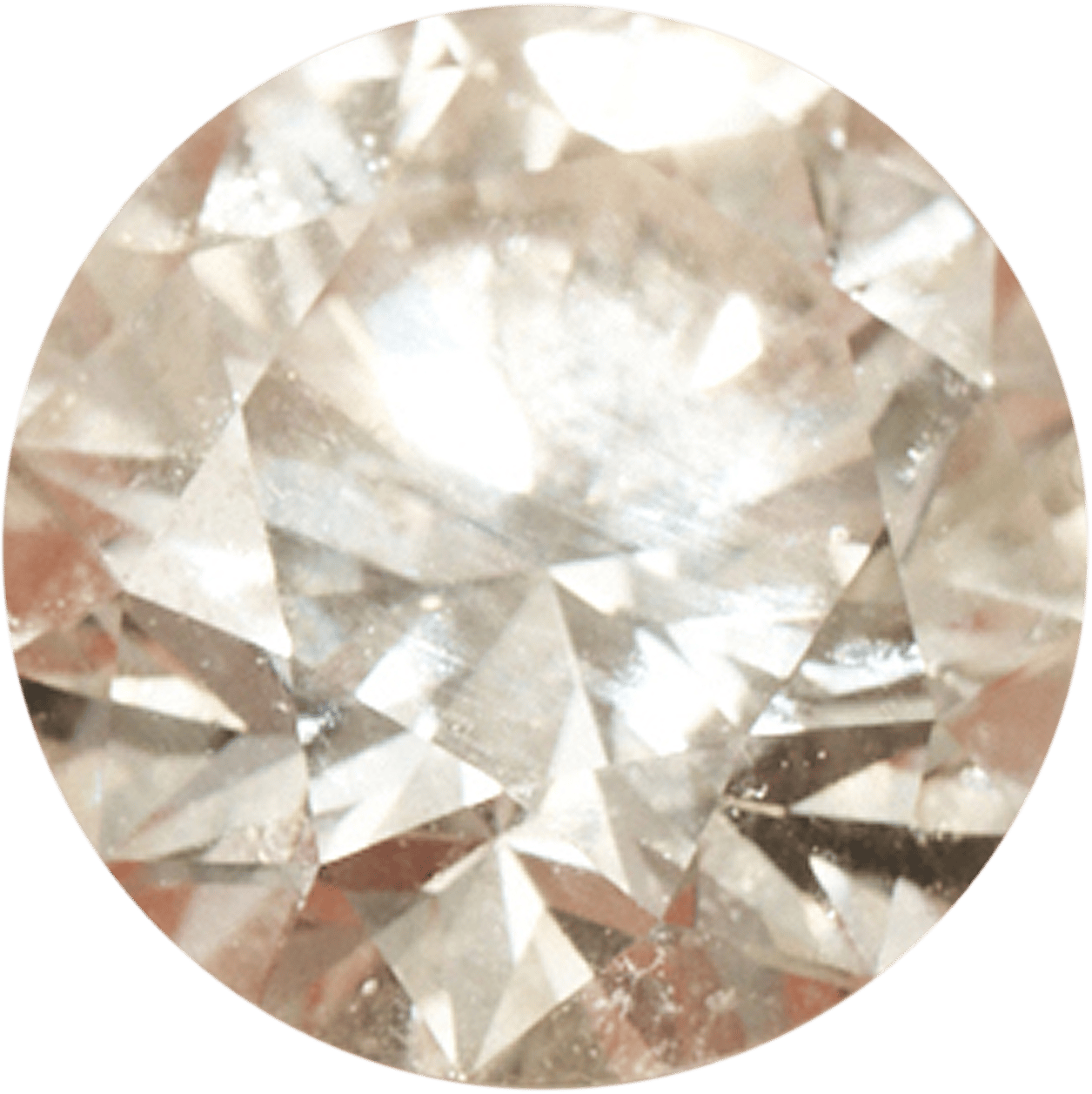
Diamond sizes shown are for visual reference only and are approximate. Actual sizes may vary.
But weight is just one part of the equation. A diamond with an excellent cut grade can appear visually larger than one of the same weight with inferior proportions. Because pricing increases exponentially with size, understanding how carat interacts with the other 4Cs—especially cut—can help you find a diamond that balances visual impact, beauty, and budget.
What Is Diamond Carat Weight
Carat refers to the unit of measurement used to determine a diamond’s weight. One carat is equal to 200 milligrams or 0.2 grams. The term originates from the carob seed, which was historically used as a standard of measurement due to its consistent weight.
It’s important to note that this measurement does not necessarily indicate a diamond’s size. Two diamonds of the same weight can appear quite different depending on their cut and shape. This is why considering all the 4Cs together is crucial when selecting a diamond.
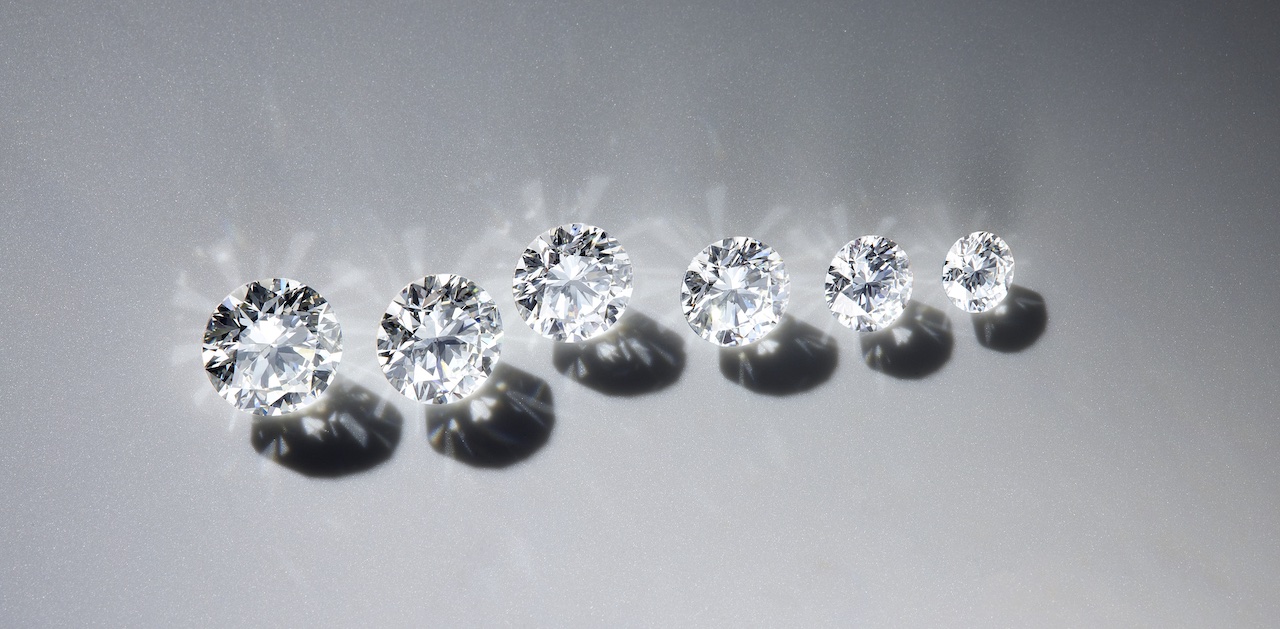
How Carat Weight Affects the Price of a Diamond
Weight has a significant impact on the price of a diamond. As it increases, the price per carat typically rises exponentially rather than linearly. This is because larger diamonds are rarer, making them more desirable and valuable. For example, a 2-carat diamond will generally cost more than twice the price of a 1-carat diamond of the same quality.
Additionally, diamonds are priced in weight brackets, so once a stone crosses a key threshold—like 0.50 or 1.00—the cost increases significantly. To get more value for your budget, consider choosing a diamond just below one of these benchmarks. For example, a 0.95 may look nearly identical to a 1.00 but come with a noticeably lower price tag.
Diamond Shapes That Appear Larger
Certain diamond shapes appear larger than their actual weight due to the way they are cut. If you want to maximize the perceived size of your diamond without significantly increasing your budget, consider these shapes:
Oval Cut: The elongated shape of oval diamonds creates the illusion of a larger surface area.
Marquise Cut: This football-shaped diamond has a long and narrow structure, making it look larger than round diamonds of the same weight.
Pear Cut: With a tapered point and rounded end, pear-shaped diamonds appear bigger due to their unique proportions.
Emerald Cut: The step-cut facets and rectangular shape of emerald diamonds make them look elongated and larger.
Diamond Shapes That Appear Smaller
On the other hand, some diamond shapes retain more in their depth rather than across the surface, making them appear smaller than other shapes of the same weight. These include:
Asscher Cut: With its step-cut facets and deep proportions, the Asscher cut retains more weight below the surface, making it appear smaller than shapes with a larger table.
Round Cut: While round diamonds are the most popular shape, they can sometimes appear smaller than elongated shapes due to their proportional depth-to-width ratio and their high brilliance, which concentrates light rather than spreading it across the surface.
Princess Cut: This square-shaped diamond holds some weight in its deep pavilion, reducing its visible surface area. However, its sharp corners help maximize its face-up appearance.
Cushion Cut: Due to its soft, rounded edges and deeper proportions, cushion-cut diamonds often appear slightly smaller than other shapes of the same weight.
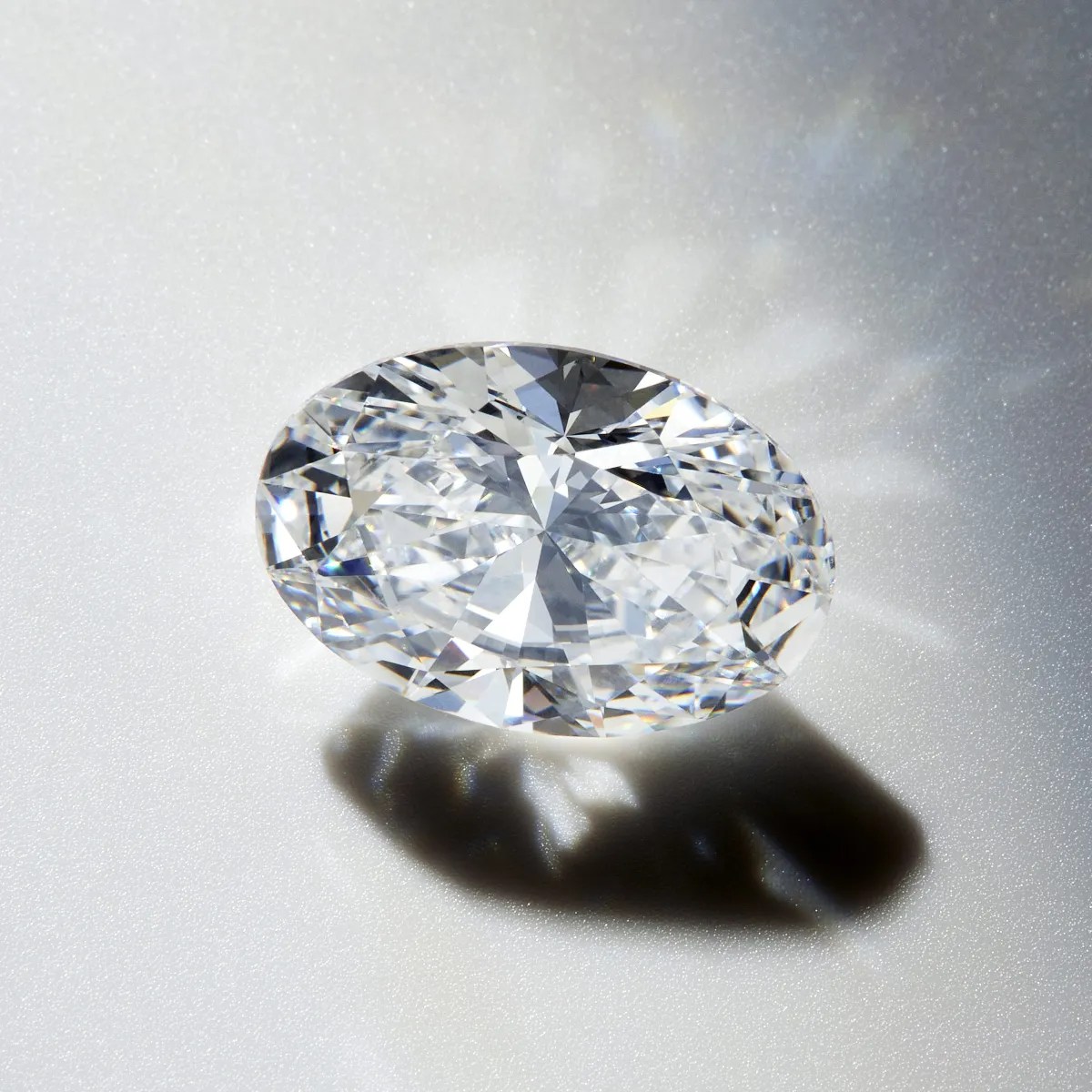

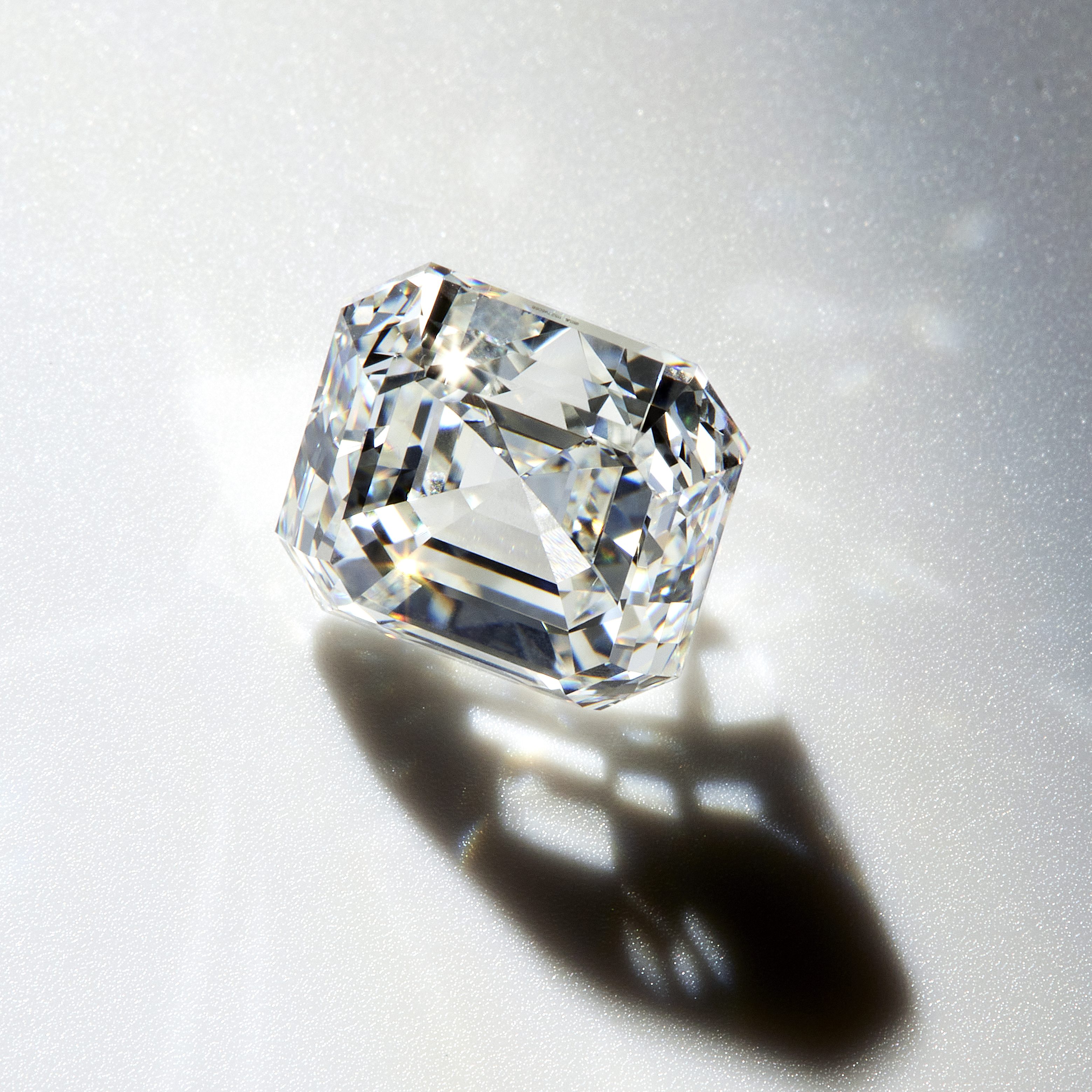
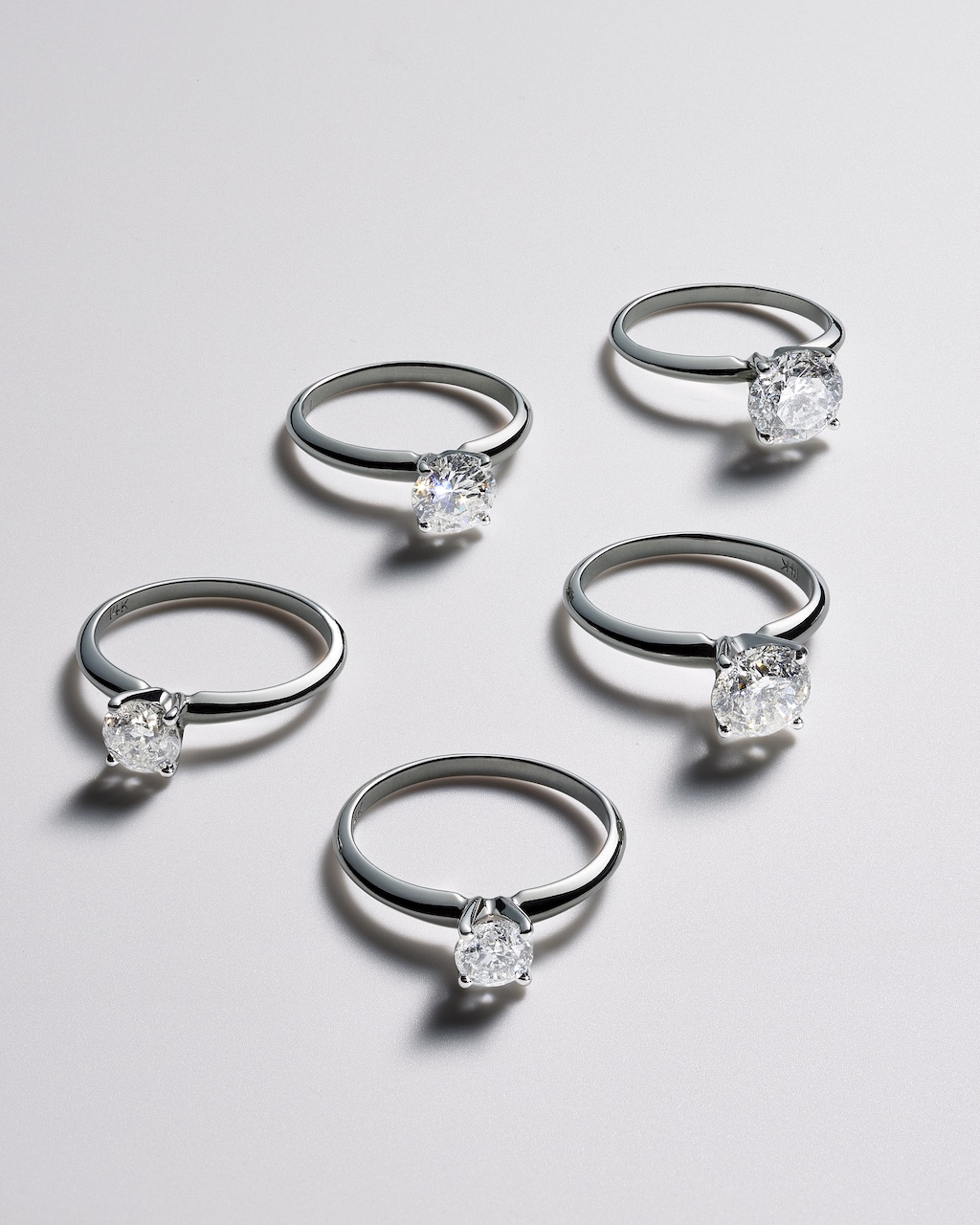
Thinking Beyond Carat Weight
While weight plays a role in a diamond’s size and value, it shouldn’t be the only factor in your decision. A larger diamond isn’t always the best choice—sometimes, focusing on cut, clarity, or setting can give you even more sparkle and impact. Here’s when prioritizing other factors makes sense:
- Focus on Cut Quality: A well-cut diamond reflects light beautifully, making it appear brighter and more brilliant than a larger, poorly cut stone.
- Consider Your Setting: Halo, three-stone, and other enhancing settings can make a smaller diamond look larger, allowing you to prioritize quality over size.
- Balance Budget and Beauty: If you’re working within a budget, opting for a slightly lower weight with a high-quality cut and clarity can give you the best balance of brilliance and value.
By choosing cut, setting, and overall sparkle over sheer size, you can find a diamond that looks stunning—regardless of carat weight.
Carat weight is one of the most noticeable features of a diamond, but it’s just one piece of the puzzle when selecting the perfect stone. Understanding how different shapes maximize size, how price brackets affect cost, and when to focus on cut or clarity instead can help you make a smart and well-informed decision. Whether you’re looking for a dazzling diamond engagement ring or a stunning piece of jewelry, knowing how the 4Cs as a whole impact both appearance and value will guide you toward the best choice for your needs and budget.
About Natural Diamond Council
Natural Diamond Council (NDC) is the global authority on natural diamonds. As a not-for-profit organization, NDC is committed to advancing the integrity of the natural diamond industry and celebrating the unmatched beauty and value of natural diamond jewelry. NDC serves as the industry’s definitive voice, offering expert insight, trusted education, and unparalleled access to the world of real, rare, and responsibly sourced natural diamonds.

